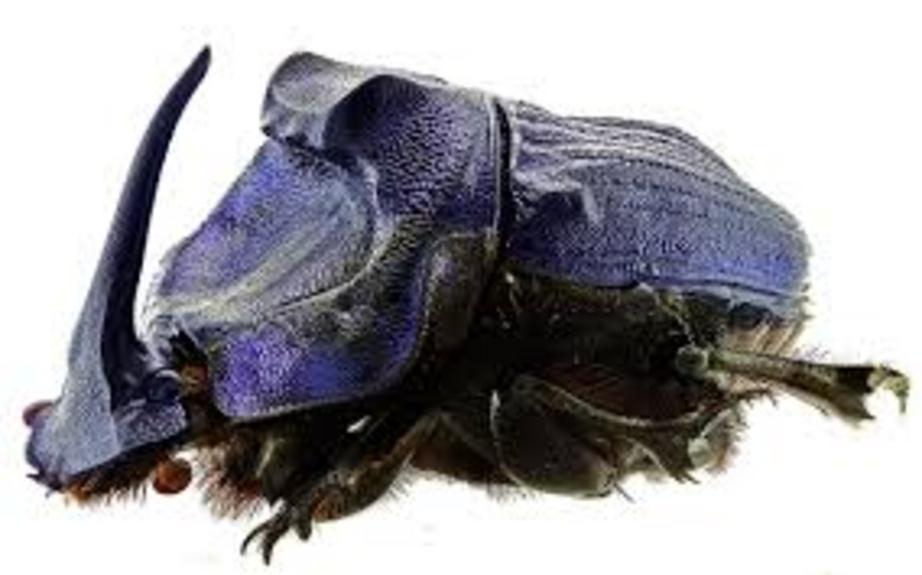Selective logging reduces biodiversity, disrupts Amazon ecosystems
Reduced-impact-logging techniques are now used globally. This forestry approach, also called selective logging, aims to preserve biodiversity and maintain forest ecosystem functions while extracting commercially valuable timber. However, new research shows that even low-levels of timber extraction can have a detrimental effect on biodiversity that includes impacts on important ecosystem engineers such as dung beetles.
- Reduced-impact logging, also called selective logging, which gained popularity in the 1990s, aims to balance biodiversity impacts with global demand for timber by extracting fewer trees. But the success of this approach is coming under increasing scrutiny.
- A new study in the Brazilian Amazon found that dung beetle communities, and their important role as “ecosystem engineers,” is severely disrupted by even low-level timber extraction, with sharp reductions in species richness.
- Multitudes of studies on birds, mammals, amphibians and invertebrates around the globe demonstrate the same finding: that even low-levels of timber extraction have significant impact on species diversity.
- This extensive research suggests that selective logging techniques should be shelved in favor of “land-sparing” timber extraction strategies, which create a patchwork of highly logged sites and intact forest reserves.
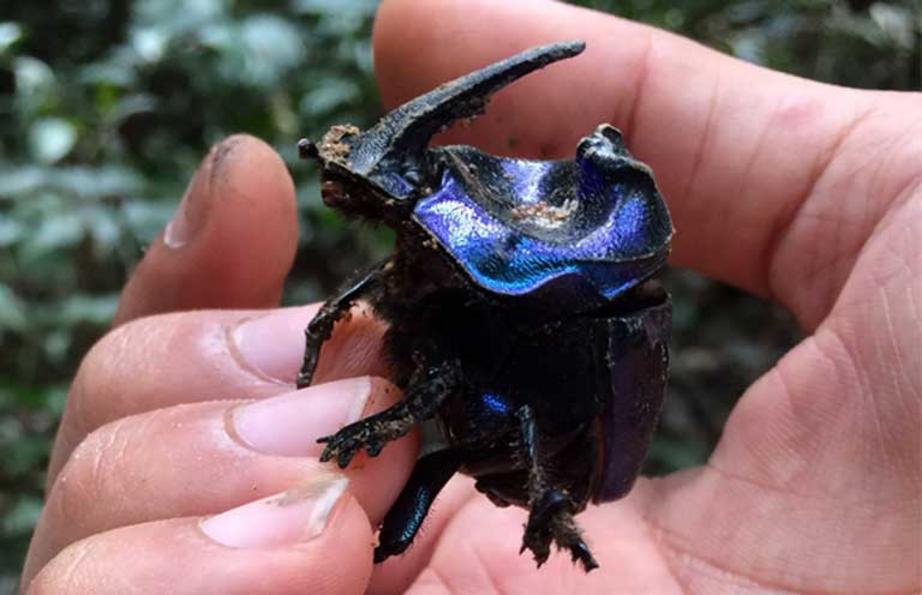
Coprophanaeus lancifer, the largest crepuscular tunnelling dung beetle species found in the Amazon study region. Photographed in the Brazilian Amazon, 2016. Photo by Filipe França
Reduced-impact logging (RIL) became popular in the 1990s because it promised to provide timber without the ecologically devastating effects of clear-cutting. There are no published estimates of the global scale of RIL schemes, but a Food and Agriculture Organisation of the United Nations (FAO) report in 2015 found that more than 2.1 billion hectares (8.1 million square miles) of forest is under a forest management plan, and 438 million hectares (1.7 million square miles) are internationally certified.
Meanwhile, evidence has been mounting over the last decade that selective logging may not be the win-win scenario it was once thought to be.
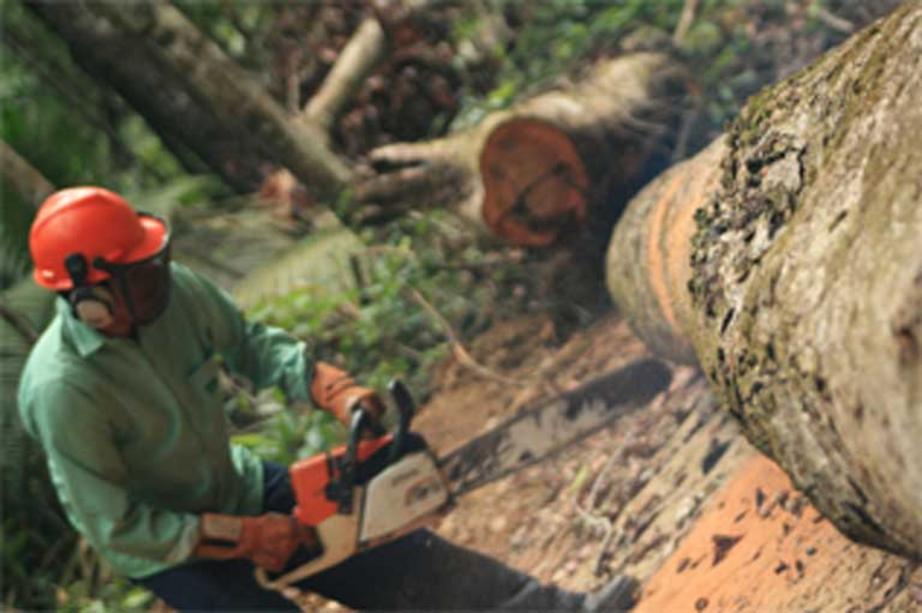
Tree being logged by a worker within the Brazilian timber concession where the study was conducted. Photo by Filipe França
Low level logging impacts dung beetles
In a study published online in Biological Conservation in October, an international research team compared the species richness of dung beetles and their effectiveness at removing dung, both before and after selective logging, at thirty-four sites in the Amazonian Jari Florestal logging concession in Pará, Brazil.
Under a 30-year cutting cycle developed by the FAO, the Amazon sites experienced varying intensities of logging: from zero trees removed, up to nearly eight trees per hectare. The research team found that even very low-intensity timber removal had a significant impact on dung beetle populations. The removal of just 3 to 35 trees in a 10-hectare (25 acre) site resulted in 1 to 8 fewer species of dung beetle post-logging. Filipe Franca, an ecologist at Lancaster University who led the study, concludes that
“Even low levels of timber removal can lead to the loss of forest biodiversity and ecosystem functioning.”
The team found that dung beetle species richness decreased as logging intensity increased. Unexpectedly, this relationship was curved, with the steepest declines in dung beetle species occurring when the first few trees were removed. Franca suggests that the immediate effects of even low-intensity logging may occur because extraction techniques inadvertently damage neighboring trees and undergrowth, causing a disproportionate effect to the weight of timber removed.
Pará is the second largest state in Brazil, and home to 25 percent of Brazil’s Amazon forest. It supports extraordinary levels of biodiversity, with nearly 10 percent of the world’s bird species found in these forests.
As the largest timber-producing state in Brazil, Pará has also suffered severe deforestation with this state alone accounting for a third of the total forest lost in Brazil between 1998 and 2015.
Earlier this year, Pará made headlines around the world after Brazil’s government announced plans to open the national reserve of Renca, which covers 4.6 million hectares (17,800 square miles) in Pará and the neighboring state of Amapá, to mining. The decree was later revoked after intense pressure from conservationists, but vast swathes of Amazon forest in Pará remain open to logging, and a 2006 report by the State Environment Agency identified 25 million hectares (96,500 square miles) of forest for potential timber extraction.
Franca’s study suggests that even low-levels of logging in these forests could have a disastrous impact on dung beetle communities and the invaluable ecosystem services they provide.

Diabroctis mimas is a large black and metallic-green dung beetle species found in the forests of Pará state. Photographed in the Brazilian Amazon, 2016. Photo by Filipe França
Dung beetles: engineer of forest ecosystems
Dung beetles might not be the most glamorous of the Amazonian insects, but they perform crucial ecosystem functions such as ploughing and aerating the soil, fertilizing plants with fresh dung, and helping to disperse seeds. Because of these roles, dung beetles are known as “ecosystem engineers.”
Furthermore, changes in dung beetle communities are thought to be representative of changes to other taxonomic groups. “Most people I talk to about dung beetles think it is funny or strange that we use them in research for examining forest health. In fact, just a few people know that dung beetles are a key indicator group for the overall health of ecosystems,” says Franca. Beetle communities respond quickly to disturbance by logging, fire and road construction, and because they rely on the dung of other species, dung beetle communities also respond to other human activities such as hunting.
Dung beetles show similar responses to forest disturbance as other taxonomic groups including ants, birds and plants. All experience greater species richness in primary forest than in logged sites and agricultural lands.
In line with the recent Amazon dung beetle study, even minimal deforestation has been shown to significantly increase extinction risk in over 19,000 species of vertebrate worldwide. A 2014 study found that removing 38 cubic meters of timber per hectare halved the number of mammal species present and that logging intensity was the most important determinant of species richness in butterflies, dung beetles and ants.
Franca’s new study has been criticized by some researchers for its small sample size and limited replication. “In my view this is a classic case of very broad generalizations being drawn from limited data,” says Andrew Davis, former senior scientist at the Danum Valley Field Centre in Sabah, Malaysia. Davis carried out one of the first investigations on the effects of logging on dung beetle communities in tropical rainforest. “They tell a nice story although based on a sample of less than 5,000 specimens with limited replication,” Davis says.
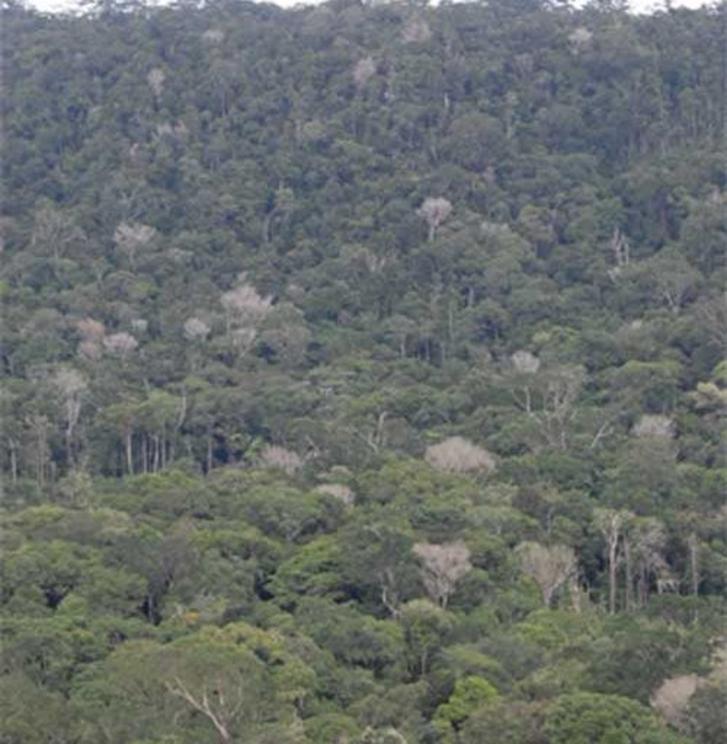
Brazilian Amazon rainforest near the fieldwork site, state of Pará, July 2013. Photo by Filipe França
Franca defends the methodology, saying that the study compared a gradient of logging intensities before and after logging, rather than directly comparing logged and unlogged sites.
Davis also points out that the Amazon study’s method for catching dung beetles – pitfall traps that beetles and other insects fall into and cannot escape – may have missed some species: “The authors are, by only using pitfalls, sampling a subsection of the dung beetle community.” He adds that traps that catch insects in flight tend to catch different species and in varying abundances.
Franca counters, noting that “dung-baited pitfall traps are a standardized method for sampling dung beetles in ecological research elsewhere in the tropics, and is considered a most robust method.”

Amazonian timber yard within the study area. Photo by Jos Barlow
A matter of scale
Forestry legislation in Brazil operates at the scale of 100 hectares (247 acres), which is also commonly used in studies assessing the impact of logging programs. However, Franca’s study shows that impacts on dung beetles are evident at much smaller scales, from 10 to 90 hectares. “Smaller spatial scales should be considered when monitoring the logging impacts on tropical biodiversity,” Franca states.
Furthermore, Franca and his colleagues found that different effects of logging were evident at different scales; changes in beetle communities were best explained by logging intensity at the 10-hectare scale, but changes in dung removal rate were only detectable when considering logging intensity at the 90-hectare scale.
“The ecological consequences from timber removal are highly dependent on the scale at which logging intensity is measured,” explains Franca. He admits that the cause of this pattern is still something of a mystery. “This is a good question for further research aimed at understanding whether biodiversity and ecosystem functioning respond similarly to human-induced forest disturbances at different spatial scales.”
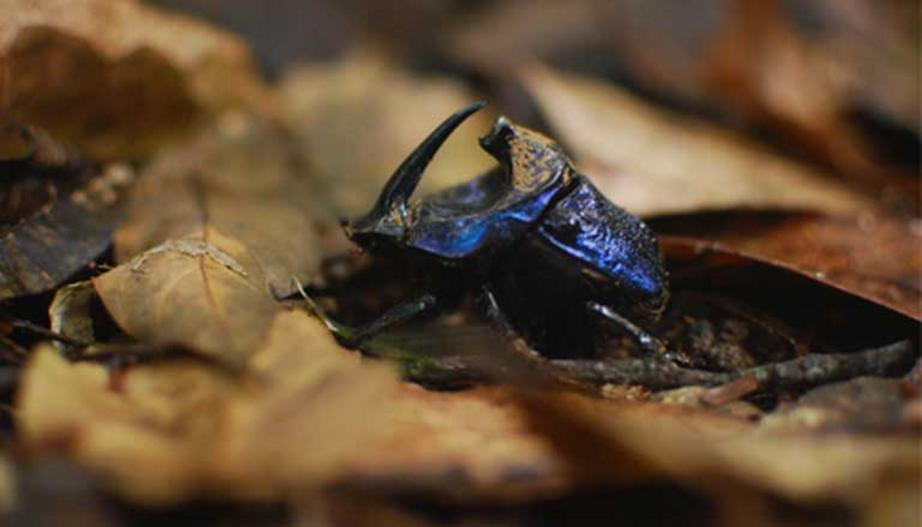
Coprophanaeus lancifer dung beetle species photographed in the Brazilian Amazon, 2012. Photo by Hannah M. Griffiths
Land sparing or land sharing?
Selective logging is an example of “land-sharing” timber extraction, where it is hoped that wildlife and the natural services they provide can be maintained alongside moderate levels of timber extraction. Instead, Franca’s study, and others that have found low thresholds for logging impacts in tropical forests, provide evidence in favor of “land-sparing” timber extraction strategies, which create a patchwork of highly logged sites and intact forest reserves.
Several studies have found evidence for the unique importance of intact forests. Sparing unlogged forests avoids the rapid initial loss of species that occurs with selective logging and could help maintain higher levels of biodiversity, overall, by protecting vital ecosystem functions like decomposition and seed dispersal.
“The shape of the relationships between logging intensity and dung beetle responses provide support for land-sparing logging as the most promising strategy for maximizing the conservation value of logging operations,” says Franca.
Evidence from two decades of research increasingly suggests that selective logging may not be effective in preserving species biodiversity or the services that intact ecosystems provide. Forestry management, urge the researchers, should respond to the wealth of new evidence and consider the use of land-sparing models rather than selectively logging entire forests.

Timber logs1_by FFrança: Amazonian logs gathered in a timber yard. New research shows that even low-levels of timber extraction, as carried out using selective logging, can have a detrimental effect on biodiversity. Photo by Filipe França
For the rest of this article please go to source link below.
For full references please use source link below.

